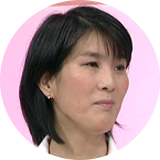Change in Inflation Forecast
The BOJ set the 2% inflation target back in 2013 in the hope that it will create a virtuous economic cycle. Since then, the bank has maintained it would be achieved in a two-year timeframe. But experts have been pointing out that was unrealistic. In fact, the BOJ pushed back its self-imposed deadline six times.
In the latest meeting, the inflation forecast for the next three years was lowered.
FY2018 1.3%→1.1%
The numbers show that reaching the target in two years is impossible. BOJ officials initially thought that with Japan facing its most severe labor shortage in more than 4 decades, firms will be forced to raise wages, thus passing the cost on to consumers. They had expected prices to rise at the start of fiscal 2018 in April.
But in reality, momentum on prices has weakened, excluding energy-related sectors. In the past, the BOJ blamed the subdued inflation on temporary factors, such as increases in consumption tax and falling crude oil and commodity prices.

Why Won't Prices Rise?
At the latest meeting, policymakers had no choice but to acknowledge the difficulty of achieving the two-year timeframe. They analyzed the factors behind the real move.
Firstly, with companies increasingly willing to accept workers that are available only for limited hours, more women and seniors are working and this has somewhat eased the labor shortage. With these new people on low wages, central bankers say the move has discouraged across-the-board wage increases.
Secondly, the Bank argues that years of deflation have led people to think that prices will not go up. With very few consumers willing to accept higher price tags, firms are taking measures to avoid raising prices, including cutting operating hours and introducing automated service options.
The BOJ also points to the fact that more people are turning to online shopping. This makes it easier for people to search for cheaper products and second-hand goods. Bargain hunting has forced supermarkets and department stores to cut prices.
Side Effects of Massive Monetary Easing
Despite all this, the Bank of Japan has not given up on the 2% inflation target. BOJ Chief Haruhiko Kuroda told reporters that, while it will take longer than expected, prices will rise toward the 2% mark. He stressed the need to keep interest rates extremely low for a relatively lengthy period of time.
This raises questions about the side effects of the policy. The Bank’s unprecedented easing measures include massive purchases of government bonds, exchange-traded funds (ETFs), adopting a negative interest rate policy, and guiding long-term interest rates to zero percent.
These measures have dealt a blow to pensioners who rely on savings. Regional banks are making less profit and banks have raised their commission fees. And some experts say aggressive easing is distorting the stock market. By buying ETFs, stock prices have been pushed up. The BOJ has become a major stakeholder in an increasing number of firms. The Bank is aware that it needs to reduce these side effects to maintain monetary easing for the long-term. It has been reducing its annual government bond purchases by half on a low-key basis.
This time around, policymakers approved cutting spending to purchase ETFs. They also decided to allow 10-year long-term interest rates to move in a range of minus 0.2 percent to 0.2%, doubling the band they had been moving in previously.
The BOJ's official acknowledgement about the difficulty of meeting the 2% inflation target may have come too late. Some experts say BOJ officials may be forced to further revise their policy, such as raising interest rates, if the profitability of financial institutions continues to fall.

Drastic Review Required
The question is, having admitted that prices and wages will not easily rise, is it truly necessary for the BOJ to stick to the 2% inflation target? Japan is no longer facing deflation and the country’s economy continues to expand. Does the BOJ really need to continue unprecedented easing under such circumstances? A thorough review is needed to consider whether that is absolutely necessary, otherwise, it will only get harder to decide when to stop. People will get used to ultra-low interest rates, while declining interest payments might drive the government to borrow more and increase debts. Concerns are mounting over longer-term side effects.
The situation may worsen if the US-China trade row starts affecting the global economy. If the Japanese economy enters a downturn, there may be not many options left for the BOJ to take. It is crucial for the Bank to reexamine its policy and make necessary adjustments before it is too late.

